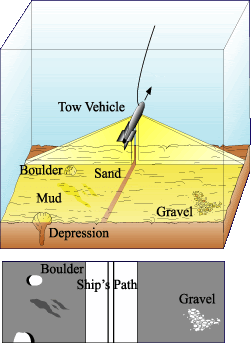
Ophiolites are one of my favorite types of rocks because they are very interesting to study and are extremely important in reconstructing past tectonic settings. An ophiolite is a stratified slab of oceanic crust that has been uplifted onto land and is then exposed with continental rocks. The word ophiolite comes from the Greek words "ophio" meaning snake, and "lite" meaning rock. Ophiolites are found in a distinct stratigraphic sequence which corresponds with its formation underwater. This sequence is as follows:
1. Sediments, usually black shale or chert
2. An extrusive sequence consisting of pillow basalts that were solidified by the ocean water. This also shows the magma-sea water contact
3. Sheeted dikes, which are vertical and parallel, which is also the origin of the pillow basalts
4. High level intrusive rock, usually isotropic gabbro which shows evidence of a fractured magma chamber
5. Layered Gabbro
6. Cumulative Peridotite which usually forms in dunite-rich mineral layers
7. Tectonized Peridotite which will normally be Harzburgite/Iherzolite-rich mantle rocks
These rocks are also very important in geological dating. By assessing the location of the ophiolites today, as well as analyzing the fossils/mircofossils found in the ophiolite, a timeline sequence can be created and in some cases, a good estimate of the ophiolite's original location can be described. These rocks were mentioned several times in a few different geology courses I have taken because the are applicable to many different areas of study. Ophiolites are also an important factor in interpretation geophysics. Since we have only explored the first 25% of the oceanic crust, these rocks can can prove very useful when comparing them to surroundings of in situ oceanic crust. Ophiolites have been found in various areas around the world such as:
-Joruma Ophiolites in Finland
-Troodos Ophiolites in Cyprus
-Vourinos and Pindos Ophiolites in Greece
-Semail Ophiolites in Oman and the United Arab Emirates
-Various types in various locations throughout Newfoundland
-Yakuno Ophiolites in Japan
Ophiolites can be divided into two groups: Tethyan and Cordilleran, based on their location. Tethyan ophiolites are found in the Eastern Medeterranian region while Cordilleran Ophiolites are normally found in the North American region. Though the two groups follow similar sequences, they are have individual characteristics specific to their region. Hopefully in the future, geologists can use these rocks to open more doors in the field of submarine geology and oceanic crust processes.




